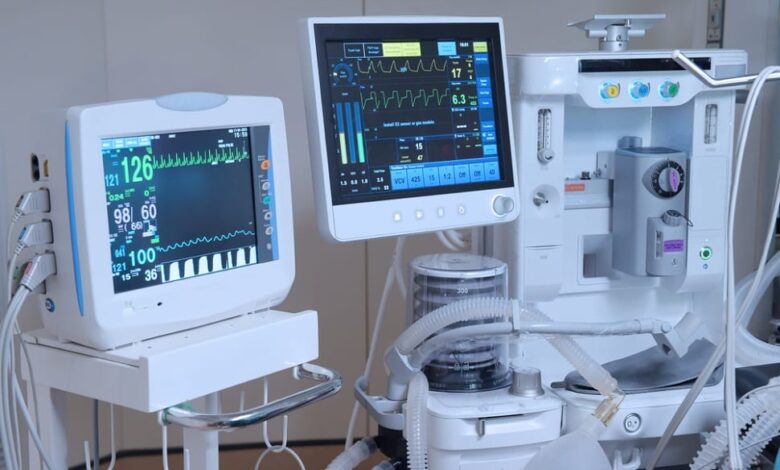Future Trends and Innovations in Maintaining Medical Equipment

The following is a guest article by Jinesh Patel, Co-Founder and CEO at UptimeHealth
The Internet of Things (IoT) has started making waves in various industries, including healthcare. IoT has enabled real-time medical equipment monitoring in the healthcare industry by providing insights into performance and potential issues before they become critical. Almost 30 billion devices are estimated to be connected worldwide by 2030.
With my wealth of experience, I can attest that the global medical equipment maintenance market will change significantly soon. IoT sensors are a great tool embedded in medical devices. They can collect data on equipment performance, usage patterns, and environmental conditions. This data is then transmitted to centralized systems that can analyze it in real-time.
With real-time monitoring, service teams can respond to issues more quickly and efficiently, even often resolving problems remotely, without on-site inspections. This, in turn, reduces maintenance downtime and unnecessary costs.
AI and Machine Learning
Artificial Intelligence (AI) and Machine Learning (ML) are making their mark in the field of medical equipment maintenance by enhancing diagnostics, streamlining repair processes, and providing data-driven maintenance recommendations.
AI algorithms can analyze data from IoT sensors and historical maintenance records to accurately diagnose issues and recommend the best course of action. These recommendations are based on patterns and trends that are usually unclear and discernible to human technicians.
Furthermore, machine learning models can optimize repair processes. For instance, they can predict which components will likely fail and suggest stocking these parts in advance. This input reduces the time required for repairs and ensures that equipment is functional as quickly as possible.
Hot Swap Components and Depot Repair
Hot-swappable components allow healthcare facilities to replace faulty parts quickly and easily, reducing downtime and ensuring critical equipment remains available and ready to use. This is particularly beneficial for high-usage devices that cannot afford prolonged periods of inactivity.
Conversely, depot repair services, where equipment is sent to a central facility for maintenance, offer a cost-effective solution for smaller medical devices. Healthcare providers can benefit from economies of scale by consolidating repairs in a single location, reducing the overall maintenance cost.
Subscription-Based Equipment Models
Subscription-based models have also become one of the most popular trends in the healthcare industry. With subscription-based models, healthcare facilities can access the latest medical equipment without the burden of ownership that healthcare practitioners often stress about.
These models typically include regular maintenance and upgrades, ensuring that equipment remains up-to-date and in optimal condition. This setup also helps healthcare providers manage costs more effectively, as subscription fees are often more predictable than the expenses of owning and maintaining equipment outright.
Open-Source Parts and Service Manuals
The trend towards open-source parts and service manuals empowers healthcare facilities to manage their own maintenance and repairs, potentially easing the burden of the current technician shortage while we work towards building a more robust healthcare service workforce.
Open-source parts and service manuals provide detailed information on maintaining and repairing medical equipment. This empowers healthcare facilities to perform their own maintenance, reducing reliance on external service providers and lowering overall maintenance costs. Additionally, open-source resources can foster innovation by enabling facilities to customize and improve their equipment.
Leveraging Advanced Technologies for Optimized Operations and Patient Care
The healthcare industry is continuously driven by the strategic integration of advanced technologies, such as IoT, which empowers equipment management. This technology predicts and prevents critical failures, ultimately leading to maximized equipment uptime and minimized downtime.
Furthermore, subscription-based models for medical equipment could become more common, reducing ownership costs and ensuring that regular updates and upgrades are made faster in care environments.
With the rapid advancements in tech, the healthcare industry is expected to have a stable and more enhanced operation, poised to achieve better patient acquisition and retention.
 About Jinesh Patel
About Jinesh Patel
Jinesh Patel is a seasoned entrepreneur and innovator known for founding two successful companies and holding several patents in medical technology. As the Co-Founder and CEO at UptimeHealth, he revolutionizes healthcare by introducing technology to automate medical device management, earning him a spot on the 2021 Forbes Next 1000 list. His prior experience includes designing state-of-the-art medical devices and serving as Clinical Engineering Manager for the largest health system in Austin, TX. Jinesh’s expertise spans asset management technology, regulatory compliance, and medical equipment management, backed by an MBA and a Master’s in Biomedical Engineering from Texas A&M University.
Get Fresh Healthcare & IT Stories Delivered Daily
Join thousands of your healthcare & HealthIT peers who subscribe to our daily newsletter.
Read More



